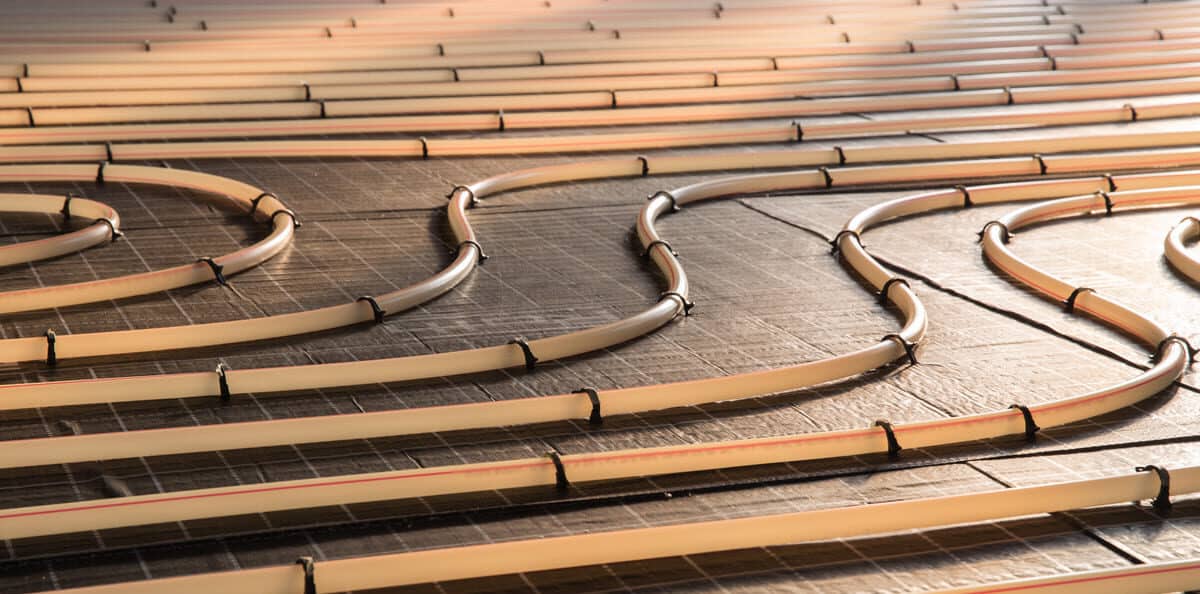Underfloor heating is a great way to keep your home warm and comfortable, but it’s important to do your research before investing in the system. Consider factors such as cost, installation time and energy efficiency when researching underfloor heating. Researching different types of systems available can also help you determine which one will best suit your needs. In addition, understanding how the system works and what materials are needed for installation can ensure that you get the most out of your purchase. Taking these steps before installing underfloor heating can save you money and give you peace of mind knowing that everything has been taken care of correctly.
What is Underfloor Heating?
Underfloor heating, also known as radiant heat, is a type of energy-efficient heating system that heats your home from the ground up. It works by running hot water or electricity through pipes beneath the floor and radiates heat throughout the room. This means you get an even temperature across the whole area without having to rely on bulky radiators or vents. Electric underfloor heating systems are particularly popular due to their convenience and low installation costs compared to other types of heating systems. Underfloor heating provides comfortable warmth with less energy than traditional methods and can help reduce your utility bills in the long run.
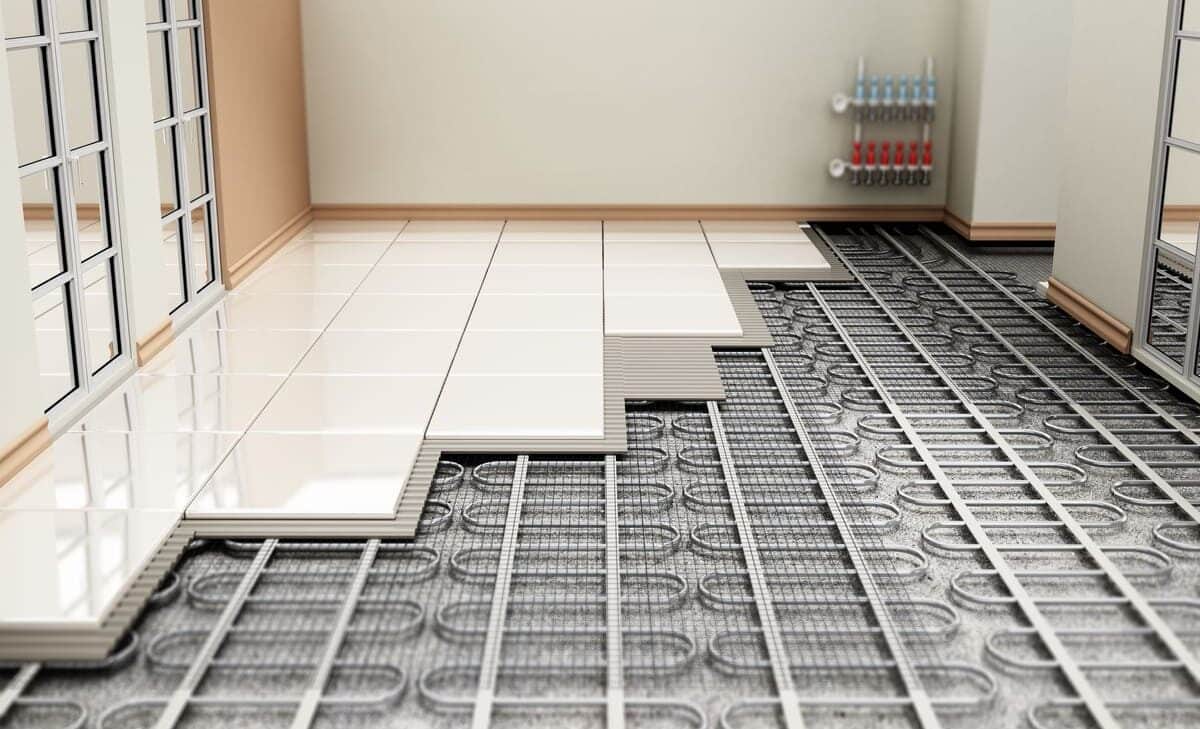
Types of Underfloor Heating
Underfloor heating systems come in two main types – electric and wet.
Electric underfloor heating systems are powered by electricity and heat up quickly, making them a great choice for those who want an efficient way to warm their home.
Wet underfloor heating is a more complex system that involves the use of hot water or heat pumps connected to an underfloor heating manifold, which circulates the heated liquid through pipes underneath your flooring.
Both types of systems offer reliable comfort and warmth all year round but have different advantages depending on your needs. Electric systems are generally less expensive to install than wet ones, while wet systems tend to be more energy-efficient over time. Heat pumps also provide added environmental benefits as they can take advantage of natural resources like solar energy or geothermal energy when available.
Benefits of Underfloor Heating
Underfloor heating is a great way to heat your home and it has many benefits. It can be installed quickly and easily, with no need for extensive renovation work. A professional installer can retrofit underfloor heating into an existing property in just one day, so you don’t have to worry about the disruption that comes with other forms of home improvement projects.
Additionally, an underfloor heating system runs silently and without any kind of air movement – meaning there’s no dust or allergens circulating around the house. The installation process also requires minimal space as all the pipes are hidden beneath floorboards or concrete slabs which makes them virtually invisible once they’re installed! Finally, unlike conventional radiators which tend to be very hot at certain points and cold at others, an underfloor heating system provides consistent warmth throughout your entire home – making it a comfortable place to live all year round!
How Does Underfloor Heating Work?
Underfloor heating systems use either electricity or hot water to warm up the floor. The most common type of underfloor heating system is hydronic, which uses hot water heated by a boiler and circulated through pipes that are embedded in the floor. This type of system works well with central heating as it can be integrated into existing systems.
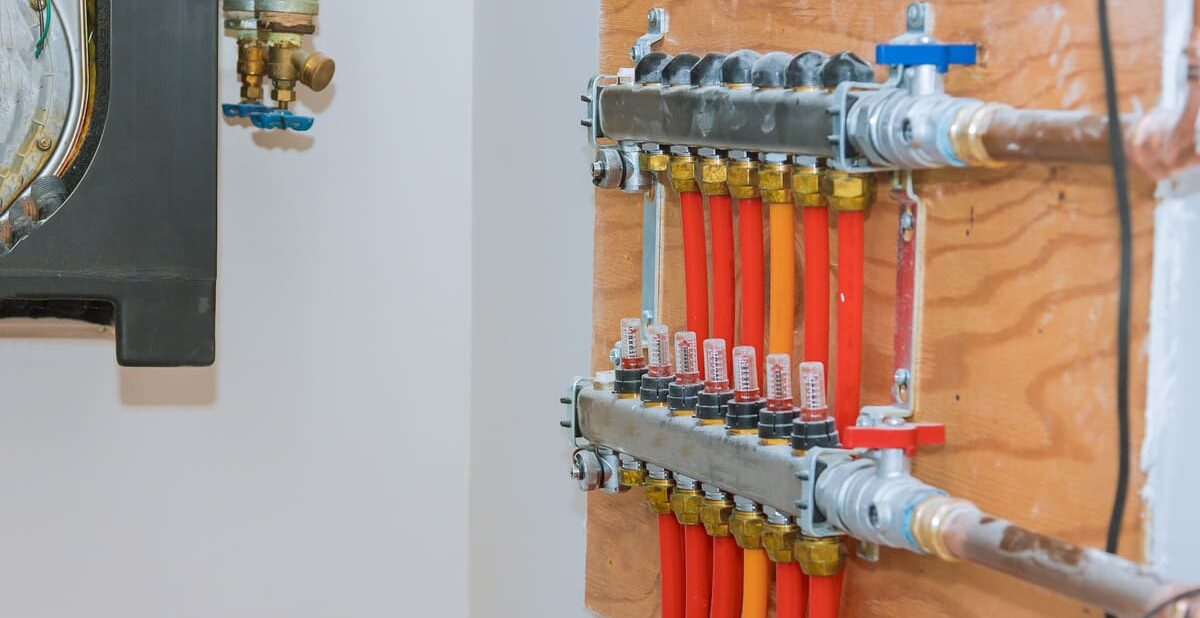
Electric underfloor heating is often used for smaller areas such as bathrooms because it requires no additional piping or equipment installation. It is also cheaper to install than hydronic systems, but typically more expensive to run due to higher energy costs. Both types of underfloor heating require special floor coverings like tiles or stone slabs that allow heat transfer between the surface and room air. Different materials will provide different levels of insulation from the heat generated by an underfloor heating system so make sure you do your research before selecting one!
Zonal Control of Underfloor Heating
Underfloor heating can be zoned for energy efficiency using a range of heat pumps, heating controls and air source heat pumps. This allows users to tailor the temperature in different areas of their home with heated floors. Zoning is available for both electric and water systems (wet systems). With zonal control you can keep certain areas warmer or cooler depending on your needs and budget. You’ll save money by only heating those parts of your house that are actually being used while still keeping it comfortable throughout the whole property. Heat pump technology has advanced significantly over recent years meaning they now offer even greater levels of energy efficiency, perfect for when considering underfloor heating as an option in your home.
What Are the Different Zoning Options?
There are a few ways to zone your underfloor heating system, depending on the type of floor covering and floor slab construction used. Wet systems have pipes embedded in concrete slabs and thermal mass helps store heat energy, making them great options for zoning. Electric underfloor heating is also easy to zone using individual thermostats on each circuit. Finally, hydronic systems use hot water circulated through piping laid beneath the floor surface – these too can be zoned easily by installing valves at specific points along the pipework layout.
What Are the Benefits of Zoning?
Underfloor heating systems can be zoned to allow for a desired temperature in each room. This means that different areas of your home can have different temperatures, creating an even more comfortable atmosphere. Zoning also allows you to enjoy the benefits of radiant heat without taking up wall space with traditional radiators or having hot water running through pipes in the walls. By zoning your underfloor heating system, you’ll be able to save on running costs and maximize energy efficiency. In addition, zoning will give you greater control over which parts of your home are heated at what times throughout the day.
Installation of Underfloor Heating
Underfloor heating installation is a complex process that requires the skills of an experienced tradesperson. The installation involves laying out the flooring, insulation and piping to create an efficient heating system. It also requires knowledge of electrical wiring, plumbing and carpentry in order to properly install the underfloor heating system. Depending on the size of the project, it can take several days or weeks to complete the installation.
Generally, there are two types of underfloor heating system: water-based and electric. A water-based system requires a condensing boiler or other heat source connected to the piping network beneath your flooring. Electric systems require mats that need wiring into an electrical circuit before being laid beneath your chosen flooring type. Whichever type you choose, proper installation is essential for optimum performance and efficiency – so make sure you use a qualified installer!
What Are the Different Installation Options?
Underfloor heating systems offer a variety of installation options, allowing you to choose the best solution for your home. If you have a suspended timber floor, it’s possible to install an electric system beneath the floorboards. This type of system is ideal if you want low running costs and don’t need too much heat in any particular room. Alternatively, a biomass boiler can be used to provide heat through radiators or as part of an underfloor heating system. Biomass boilers are great for larger homes where there’s more space available and require lower temperatures than other types of boilers. They also tend to have higher running costs due to their larger size and energy consumption requirements but may be worth considering if your home has plenty of floor space and needs lots of warmth throughout winter months.
Underfloor Heating Cost
The cost of underfloor heating systems depends on the type you choose and the size of your home. Generally, electric systems are cheaper to install but can be more expensive to run than warm water systems. Heated floor systems use electricity or hot water pipes that generate heat to warm a room and keep it comfortable throughout the year. Installing an electric system requires electrical cables to be laid in your floor, while installing a water system requires special plumbing installation as well as pumps and boilers. While there may be an upfront cost associated with these installations, they often help reduce energy bills in the long run since they are more efficient at generating heat compared to other methods such as radiators. Ultimately, investing in an underfloor heating system can save you money by helping you lower your energy bills for years down the line!

What Factors Affect the Cost of Underfloor Heating?
The cost of an underfloor heating system can be affected by a number of factors, including plumbing components, type of underfloor heating and how efficient it is as a method. Heat loss through the floor and walls needs to be taken into account when deciding on the best option for your home. Systems tend to work better at lower flow temperatures than traditional radiators or boilers which can result in lower running costs over time. When installing an underfloor heating system, you should also consider any additional installation costs such as insulation materials or additional pumps needed for circulation.
Maintenance of Underfloor Heating
Underfloor heating is a great way to provide comfortable and consistent warmth throughout your home. However, it’s important to remember that this type of system requires regular maintenance in order to keep it running smoothly and efficiently. The most important aspect of maintaining an underfloor heating system is monitoring the temperature difference between the room you are trying to heat and the area where the unit is installed. This will ensure that your system runs as intended, providing maximum energy efficiency while avoiding any potential problems due to overheating or too little heat output.
Additionally, if you’ve recently undergone a renovation project or have just had an installation process done, be sure to check with an Energy Saving Trust approved installer for advice on how best to maintain your new underfloor heating system. For dry systems such as electric mats or boards, regularly cleaning out dust from vents can help keep them functioning optimally over time. Ultimately, with proper care and attention, your underfloor heating should last many years without any major issues – so make sure you give it some love!
What Are the Most Common Maintenance Issues?
Underfloor heating systems require regular maintenance to ensure maximum efficiency and warm air distribution across the entire floor area. Some of the most common issues are related to improper installation or floor finish, as well as cold spots caused by incorrect thermostat settings. If any of these issues arise, it is important to have a professional assess the system and make necessary adjustments in order for it to heat the room effectively.
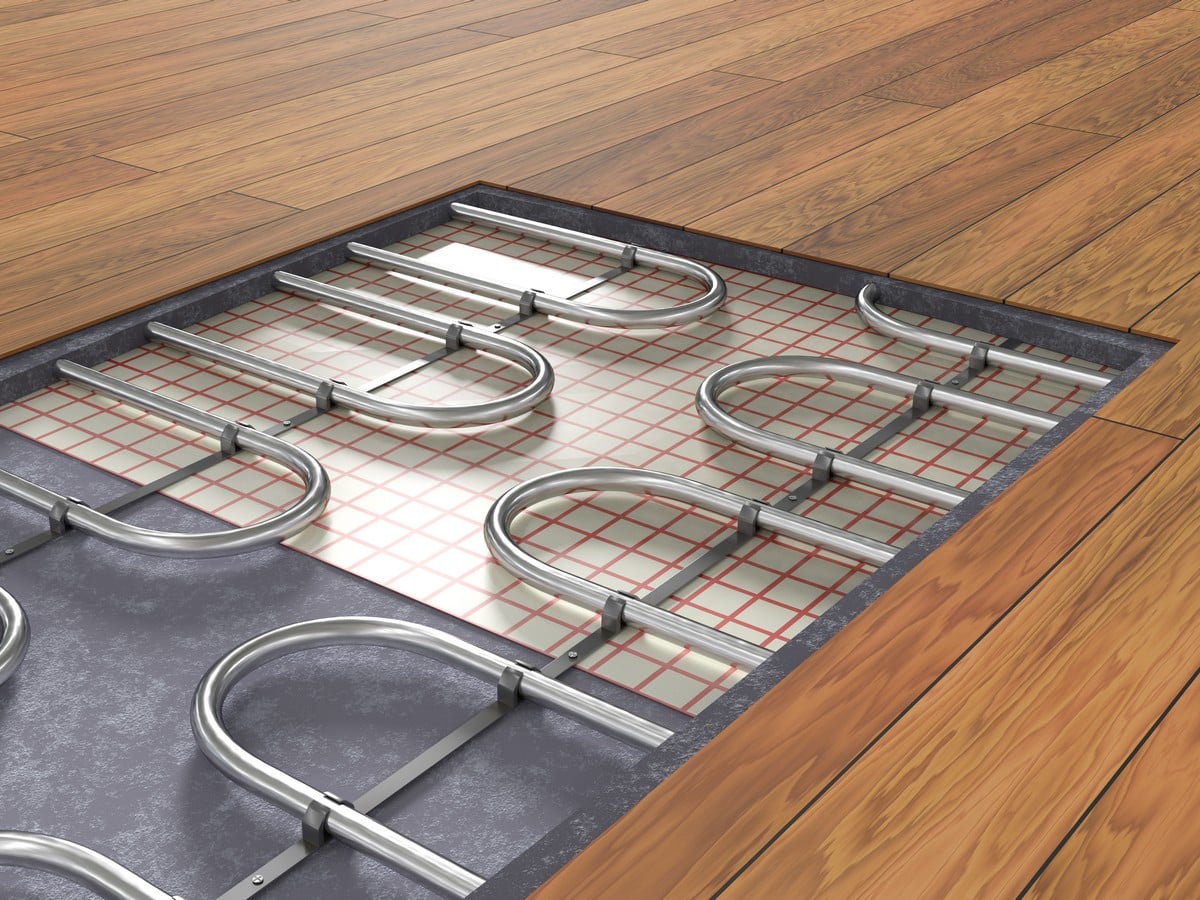
Heat Sources for Underfloor Heating
Underfloor heating systems are becoming increasingly popular due to their energy efficiency and the ability to heat a room with lower temperatures than traditional radiators. This is possible because of the consistent temperature delivered by underfloor heating, which also requires less energy than bulky radiators.
Heat sources used in underfloor heating systems can include electric mats or cables, warm water pipes (known as wet systems) or air-sourced pumps. Electric mats are ideal for smaller rooms such as bathrooms while wet systems are better suited to larger areas like living rooms and bedrooms. Air-source pumps use external air and convert it into hot water that is then pumped through the flooring system providing warmth throughout your home. Whatever heat source you choose, you’ll be sure of an efficient and comfortable environment all year round!
What Are the Pros and Cons of Different Heat Sources?
Underfloor heating systems can be powered by a range of different heat sources, including electricity, gas, oil and renewables. Each has its own advantages and disadvantages that should be considered before deciding which type is right for you. Electric underfloor heating systems are generally the easiest to install as they don’t require any additional infrastructure or piping. They also tend to cost less up-front than other types of system but can become expensive to run if used regularly due to their high running costs. Gas underfloor heating is more efficient than electric systems but requires additional pipework installation in order to use it safely. Oil underfloor heating may not be suitable for all homes due to local regulations on storage tanks but is usually cheaper than both electric and gas options over time when taking into account fuel prices. Renewable energy sources such as solar thermal panels or air source heat pumps provide a much more environmentally friendly way of powering an underfloor heating system, however these are usually more expensive initially
Pros and Cons of Underfloor Heating
Underfloor heating is a great way to warm your home in the winter months. It’s efficient, comfortable, and can help you save money on energy bills. But like any other type of heating system, there are pros and cons that come with it. Let’s take a look at some of the benefits and drawbacks of underfloor heating systems so you can make an informed decision when considering them for your home.
The main advantage to using underfloor heating is its efficiency. Unlike traditional radiators which rely on convection heat transfer, underfloor systems use radiant heat to directly warm objects in the room without wasting energy through air circulation. This makes it more efficient than other types of central heating as it requires less power to operate effectively while still providing excellent warmth throughout your house or apartment. Additionally, because there are no visible components like radiators or ductwork taking up space in your living areas, you have more flexibility when arranging furniture and decorating rooms according to personal preference
Tips for Optimizing Underfloor Heating
Underfloor heating systems are an efficient and cost-effective way to keep your home warm. However, it’s important to ensure you optimize your system in order to get the most out of it. Here are a few tips for optimizing underfloor heating:
1. Insulate Your Home – Make sure your home is properly insulated before installing underfloor heating, as this will help maintain heat more effectively and save energy costs over time.
2. Choose the Right System – Selecting the right type of underfloor heating system is key – consider factors such as floor coverings, size of room, etc. when making your decision.
3. Install Properly – If not installed correctly, an underfloor heating system won’t be able to reach its full potential; so make sure that installation is done by a qualified professional who understands all aspects of the process thoroughly!
What Are the Best Practices for Maintaining Underfloor Heating Systems?
Maintaining your underfloor heating system is an important part of keeping it in good working order and ensuring that you get the most out of it. There are a few best practices that can help to keep your system running smoothly and efficiently, including regular maintenance checks, using compatible parts when making repairs or replacements, and properly insulating any exposed pipes. Regularly checking your system will ensure that any potential issues are caught early on before they become more serious problems. It’s also important to use only compatible parts when making repairs or replacing components as this helps ensure proper operation and reduces energy costs. Finally, be sure to adequately insulate any exposed piping as this helps prevent heat loss which can reduce efficiency. Following these best practices for maintaining underfloor heating systems can go a long way towards extending its life span while helping you save money on energy bills in the process!
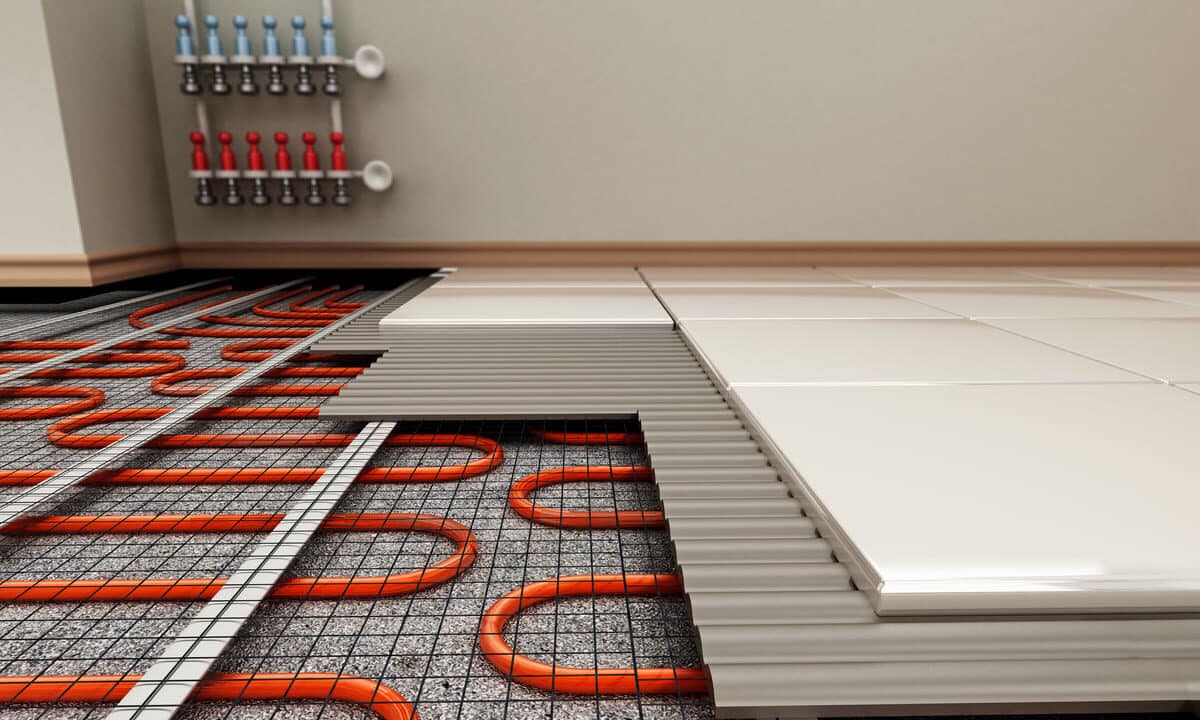
Alternatives to Underfloor Heating
If you’re looking for an alternative to floor heating, there are a few options available.
Radiators are the most common choice, as they provide heat quickly and efficiently. They also require little maintenance, making them ideal for those who don’t want to spend too much time on upkeep.
Wall-mounted electric heaters are another option – they’re cheaper than radiators but may take longer to warm up the room due to their smaller size.
Portable space heaters can be moved around your home or office and offer a great solution when you need quick warmth in one particular area of the room. Additionally, air conditioning systems can help keep your rooms cool during summer months while providing some warmth during winter months as well. Ultimately, it’s important to consider which type of system is best suited for your needs before making any final decisions. Underfloor heating works in many situations; wet systems (water underfloor heating) or an electric UFH system.
What Are the Pros and Cons of Alternatives to Underfloor Heating?
Underfloor heating installed in your property offers many advantages compared to traditional methods of home heating, but they do come with a higher cost. If you’re looking for an alternative way to keep your home warm, there are other options available that may be more affordable. Electric baseboard heaters and radiators can both provide reliable warmth at a lower price point than underfloor heating systems. However, it’s important to understand the pros and cons of each option before making your decision.
Electric baseboard heaters are usually installed along the walls of a room and provide targeted warmth directly where needed. This type of heater is relatively inexpensive to install, since no major modifications need to be made in order for them to work properly. Additionally, electric baseboard heaters don’t require any additional fuel sources like natural gas or propane so they can be used anywhere in your home without needing special connections or venting requirements.

